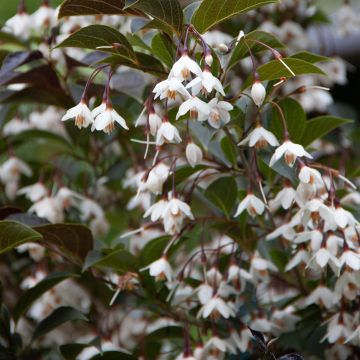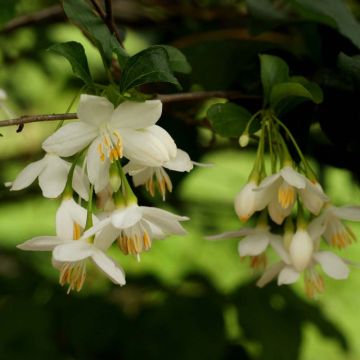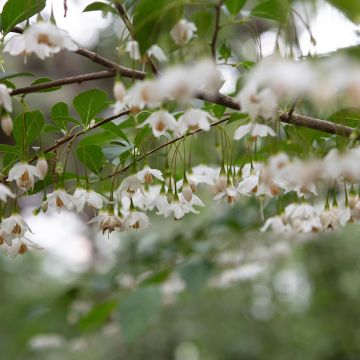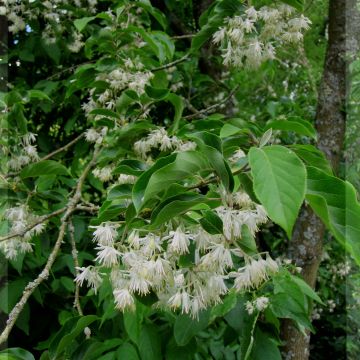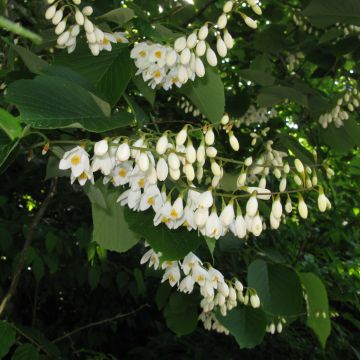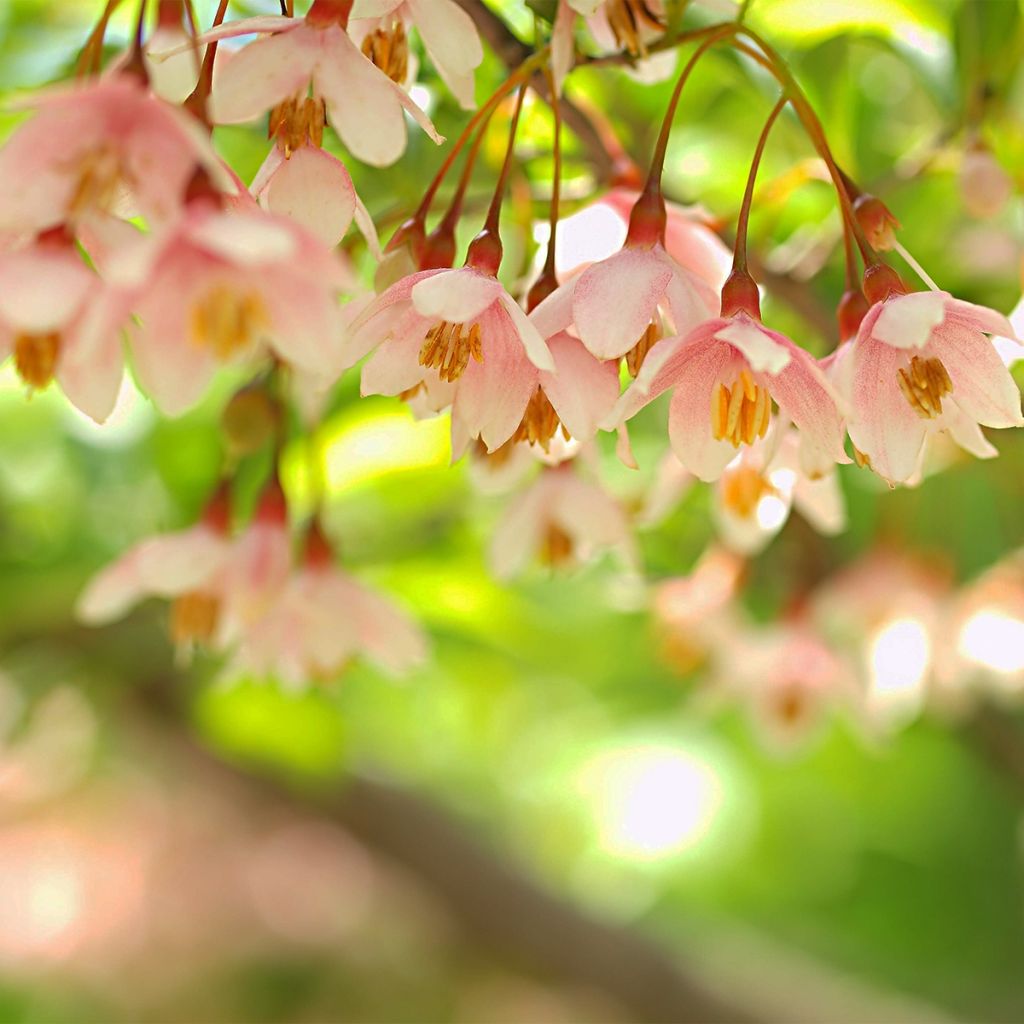

Styrax japonicus Pink Chimes


Styrax japonicus Pink Chimes
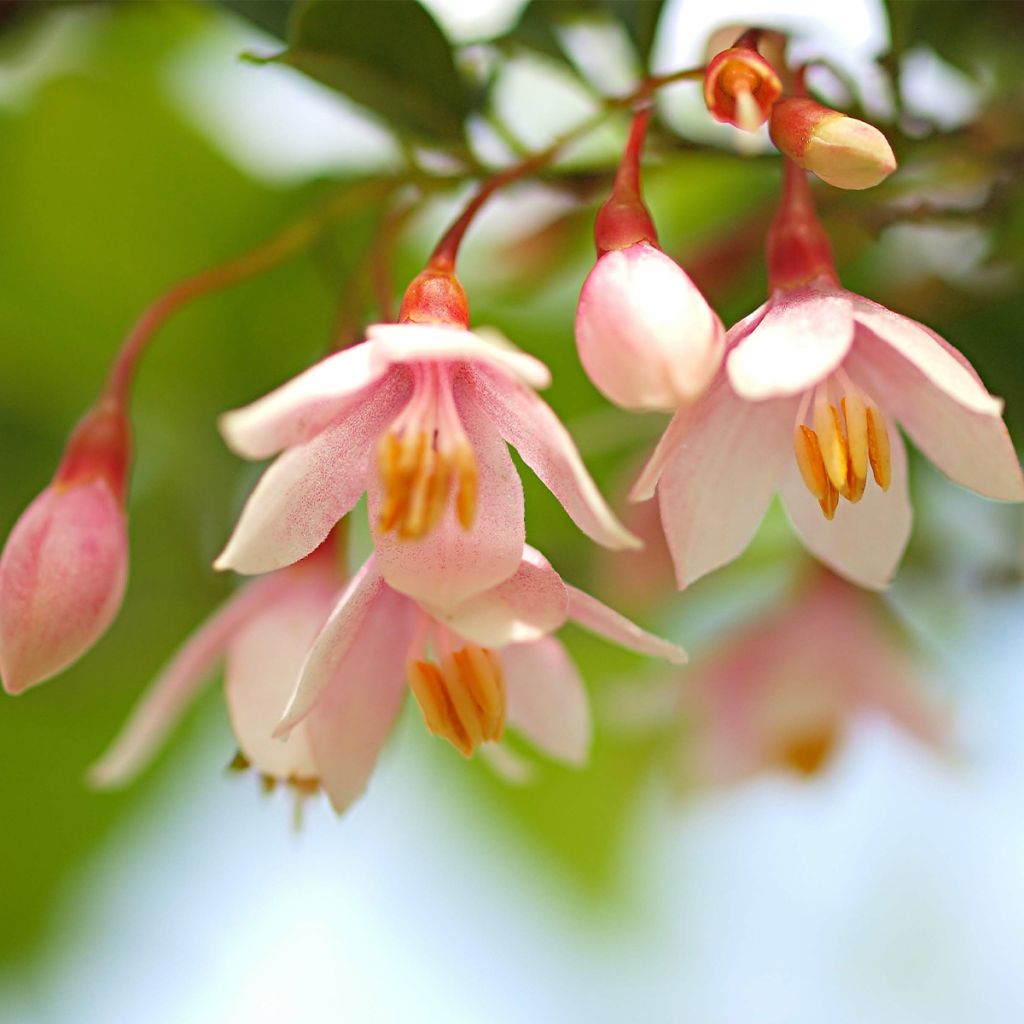

Styrax japonicus Pink Chimes
Styrax japonicus Pink Chimes
Styrax japonicus Pink Chimes
Japanese snowbell
Special offer!
Receive a €20 voucher for any order over €90 (excluding delivery costs, credit notes, and plastic-free options)!
1- Add your favorite plants to your cart.
2- Once you have reached €90, confirm your order (you can even choose the delivery date!).
3- As soon as your order is shipped, you will receive an email containing your voucher code, valid for 3 months (90 days).
Your voucher is unique and can only be used once, for any order with a minimum value of €20, excluding delivery costs.
Can be combined with other current offers, non-divisible and non-refundable.
Why not try an alternative variety in stock?
View all →This plant carries a 24 months recovery warranty
More information
We guarantee the quality of our plants for a full growing cycle, and will replace at our expense any plant that fails to recover under normal climatic and planting conditions.
Would this plant suit my garden?
Set up your Plantfit profile →
Description
Styrax japonica 'Pink Chimes' is a refined small bush for plant enthusiasts. Still relatively uncommon, this recent variety of Japanese Styrax stands out for its small, pale pink bell-shaped flowers. Highly fragrant, they hang delicately in small clusters, giving this bush a charm imbued with romance. And to finish the season beautifully, it adopts a yellow or orange autumnal dress that is quite impressive.
Native to Japan, Korea, and China, Japanese Styrax is a deciduous bush from the Styracaceae family, composed of trees and aromatic resinous shrubs. This plant family is not well represented in Europe, with the exception of Halesia carolina, the other genera being found only among collectors or in botanical gardens. Among the Styrax used for ornamental purposes, we also find S. obassia, which forms a medium-sized tree, and occasionally Aliboufier (S. officinalis) which, curiously for a Styrax, tolerates limestone. Styrax japonica, on the other hand, is a large ornamental bush that prefers partial shade and cool, humus-rich, non-alkaline soil. In recent years, cultivars with reduced growth and more colorful foliage have been developed.
The 'Pink Chimes' Styrax stands out for the colour of its flowering - not white, but pale pink, which brings a refreshing touch to the genus. It is a tall bush or small tree that, after 10 years, will reach a height of 2.50 m (8,2ft) and a width of 1.80 m (6ft). Eventually, it will reach a height of 4 m (13ft) with a spread of 2.50 m (8,2ft). These reasonable dimensions allow for planting even in small flowerbeds or as a standalone feature on the lawn of a small-sized garden, especially since its growth is slow.
It has an erect, more or less spreading and rounded habit, with a beautiful density of branches. In June-July, it is covered with terminal clusters of small pendulous bell-shaped flowers, pale pink in colour, with a darker pink base. A bouquet of yellow stamens adorns the centre of these charming little flowers. The foliage is a vibrant green, consisting of narrow and elongated leaves. In autumn, the foliage takes on beautiful shades of yellow-orange. This miniature tree is hardy (-20°C) and can be planted in full sun, although it will appreciate partial shade in hot regions. It particularly dislikes drought and limestone.
Styrax Pink Chimes generally thrives under the same conditions as Hortensia macrophylla, with which it will coexist perfectly in a flowerbed while bringing a touch of originality. It belongs to a group of plants that, without being true ericaceous plants, enjoy a fresh atmosphere and non-alkaline, humus-rich soils that retain moisture in summer. In a large space you can plant it alongside a Nyssa sylvatica, another highly underrated tree with great ornamental value due to its autumnal colours. In a smaller area, Oxydendron arboreum will also be a good companion, with its small white bell-shaped flowers in long clusters in summer and its magnificent autumnal hues. Keeping with less common plants, you could also combine with a Sarcococca, a small-sized bush with fragrant winter flowering, and in the background why not take advantage of the magic of Hamamelis, with its spider-like winter blooms and explosion of autumnal colour?
Report an error about the product description
Styrax japonicus Pink Chimes in pictures
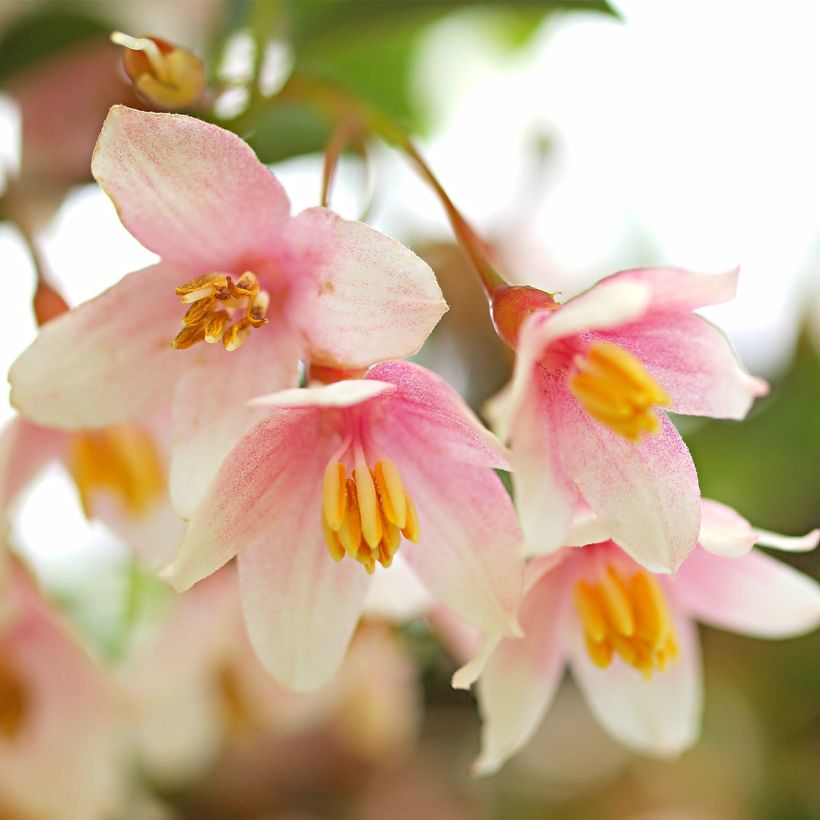

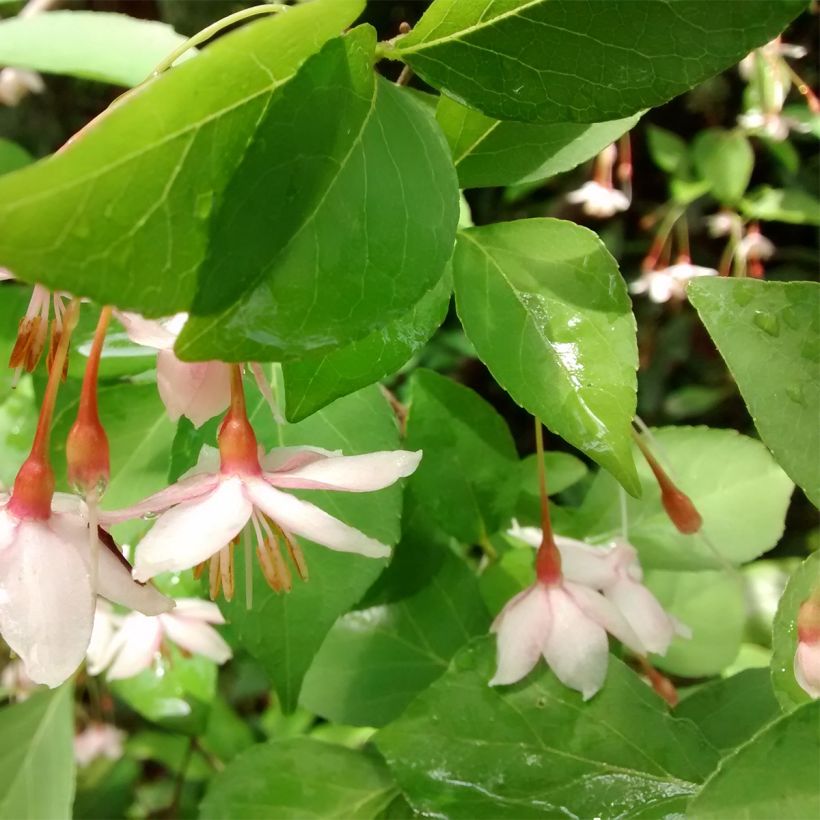

Plant habit
Flowering
Foliage
Botanical data
Styrax
japonicus
Pink Chimes
Styracaceae
Japanese snowbell
Cultivar or hybrid
Other Styrax
View all →Planting and care
Plant Styrax japonica Pink Chimes in spring or autumn, in partial shade or full sun but avoiding the very hottest exposures. The sun enhances the dark colour of the foliage. It likes acidic, humus-rich, and light soils that do not dry out in summer, like Hydrangeas, Pieris, and Camellias. Choose a location sheltered from the wind. Hardy down to -20 °C, Styrax japonica does not tolerate limestone or dry and hot climates.
Planting period
Intended location
Care
This item has not been reviewed yet - be the first to leave a review about it.
Haven't found what you were looking for?
Hardiness is the lowest winter temperature a plant can endure without suffering serious damage or even dying. However, hardiness is affected by location (a sheltered area, such as a patio), protection (winter cover) and soil type (hardiness is improved by well-drained soil).

Photo Sharing Terms & Conditions
In order to encourage gardeners to interact and share their experiences, Promesse de fleurs offers various media enabling content to be uploaded onto its Site - in particular via the ‘Photo sharing’ module.
The User agrees to refrain from:
- Posting any content that is illegal, prejudicial, insulting, racist, inciteful to hatred, revisionist, contrary to public decency, that infringes on privacy or on the privacy rights of third parties, in particular the publicity rights of persons and goods, intellectual property rights, or the right to privacy.
- Submitting content on behalf of a third party;
- Impersonate the identity of a third party and/or publish any personal information about a third party;
In general, the User undertakes to refrain from any unethical behaviour.
All Content (in particular text, comments, files, images, photos, videos, creative works, etc.), which may be subject to property or intellectual property rights, image or other private rights, shall remain the property of the User, subject to the limited rights granted by the terms of the licence granted by Promesse de fleurs as stated below. Users are at liberty to publish or not to publish such Content on the Site, notably via the ‘Photo Sharing’ facility, and accept that this Content shall be made public and freely accessible, notably on the Internet.
Users further acknowledge, undertake to have ,and guarantee that they hold all necessary rights and permissions to publish such material on the Site, in particular with regard to the legislation in force pertaining to any privacy, property, intellectual property, image, or contractual rights, or rights of any other nature. By publishing such Content on the Site, Users acknowledge accepting full liability as publishers of the Content within the meaning of the law, and grant Promesse de fleurs, free of charge, an inclusive, worldwide licence for the said Content for the entire duration of its publication, including all reproduction, representation, up/downloading, displaying, performing, transmission, and storage rights.
Users also grant permission for their name to be linked to the Content and accept that this link may not always be made available.
By engaging in posting material, Users consent to their Content becoming automatically accessible on the Internet, in particular on other sites and/or blogs and/or web pages of the Promesse de fleurs site, including in particular social pages and the Promesse de fleurs catalogue.
Users may secure the removal of entrusted content free of charge by issuing a simple request via our contact form.
The flowering period indicated on our website applies to countries and regions located in USDA zone 8 (France, the United Kingdom, Ireland, the Netherlands, etc.)
It will vary according to where you live:
- In zones 9 to 10 (Italy, Spain, Greece, etc.), flowering will occur about 2 to 4 weeks earlier.
- In zones 6 to 7 (Germany, Poland, Slovenia, and lower mountainous regions), flowering will be delayed by 2 to 3 weeks.
- In zone 5 (Central Europe, Scandinavia), blooming will be delayed by 3 to 5 weeks.
In temperate climates, pruning of spring-flowering shrubs (forsythia, spireas, etc.) should be done just after flowering.
Pruning of summer-flowering shrubs (Indian Lilac, Perovskia, etc.) can be done in winter or spring.
In cold regions as well as with frost-sensitive plants, avoid pruning too early when severe frosts may still occur.
The planting period indicated on our website applies to countries and regions located in USDA zone 8 (France, United Kingdom, Ireland, Netherlands).
It will vary according to where you live:
- In Mediterranean zones (Marseille, Madrid, Milan, etc.), autumn and winter are the best planting periods.
- In continental zones (Strasbourg, Munich, Vienna, etc.), delay planting by 2 to 3 weeks in spring and bring it forward by 2 to 4 weeks in autumn.
- In mountainous regions (the Alps, Pyrenees, Carpathians, etc.), it is best to plant in late spring (May-June) or late summer (August-September).
The harvesting period indicated on our website applies to countries and regions in USDA zone 8 (France, England, Ireland, the Netherlands).
In colder areas (Scandinavia, Poland, Austria...) fruit and vegetable harvests are likely to be delayed by 3-4 weeks.
In warmer areas (Italy, Spain, Greece, etc.), harvesting will probably take place earlier, depending on weather conditions.
The sowing periods indicated on our website apply to countries and regions within USDA Zone 8 (France, UK, Ireland, Netherlands).
In colder areas (Scandinavia, Poland, Austria...), delay any outdoor sowing by 3-4 weeks, or sow under glass.
In warmer climes (Italy, Spain, Greece, etc.), bring outdoor sowing forward by a few weeks.































